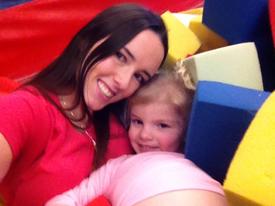Yes, you can. (Quick Start Guide to fat loss)
Replies
-
Thanks for this - you did a great job.0
-
Bump!0
-
Thanks for the info-Bump to read later.0
-
bumping for later0
-
Bump0
-
 0
0 -
Bump...need to study this later!0
-
Age = 55
Weight = 126
Height = 5'4"
Burn about 300 calories per day exercising
I started at 130 lbs with 10 lbs to lose.
Currently, I am eating 1,550 calories per day - not eating back exercise calories.
Are my calories set correctly? Thank you.0 -
I calc your rested TDEE to be 1487. If you then add on your 300 exercise this gives your daily TDEE as 1787.
I reasonable safe fat loss is this less 20% or people also target around 500 off per day to give a 1lb per week fat loss (3500 cals per week is 1lb).
You could do this :
On days you burn 300 cals exercise eat 1287 cals to aim for a 1lb fat loss per week. (based on -500 deficit per day)
Or for a slower fat loss but perhaps more manageable aim for 1430 per day (based on TDEE -20%)
On days you dont exercise you could eat 1487 (approx) to stay still or under but not below 1200 (recommended minimum for a female).
Hope that helps!0 -
Thanks Darrel! This really helped!0
-
Thanks, I love you.0
-
Awesome post!0
-
This all sounded really scary to me, but that is because I calculated it with heavy exercise (since I do Insanity 6 days a week). So that would be:
BMR = 1,843 * 1.725 = TDEE 3,197. Taking 80% of that is 2,543. That is 1,000+ more than what I eat now.
So I did it as follows, I didn't calculate my daily exercise in, but calculated how much I would burn without exercise:
BMR = 1,843 * 1.375 = TDEE 2,534. Taking 80% of that is 2027. I measure my calories burned with a HRM, since this differs every day, my calories will differ every day and it doesn't feel as scary to me and I won't feel as if I am eating too much if I don't have such a tough exercise day. And I believe it is a lot more realistic. For example today I "only" burned 393 calories, so that puts me at 2,420, which is 120 less than in the other calculation.
It is still a lot more than what I have been eating (anywhere between 1,400 and 1,500), but somehow it looks a lot less scary...0 -
bump for later. thanks0
-
I calc your rested TDEE to be 1487. If you then add on your 300 exercise this gives your daily TDEE as 1787.
I reasonable safe fat loss is this less 20% or people also target around 500 off per day to give a 1lb per week fat loss (3500 cals per week is 1lb).
You could do this :
On days you burn 300 cals exercise eat 1287 cals to aim for a 1lb fat loss per week. (based on -500 deficit per day)
Or for a slower fat loss but perhaps more manageable aim for 1430 per day (based on TDEE -20%)
On days you dont exercise you could eat 1487 (approx) to stay still or under but not below 1200 (recommended minimum for a female).
Hope that helps!
Forgot to mention I had my calories calculated at TDEE - 15%; which puts me around 1520. Will adjust to 1430 (TDEE-20%) and see if I can get better results. Thanks.0 -
Thank you so much for this! As you can see you not only helped me understand things more but several other people!0
-
bump!0
-
Bump0
-
Thankyou for the time and effort you put in to help other mfps, I know this will help me0
-
Just to reiterate really as I've been in the same place. I went from fat loss to then wanting to maintain and now add lean gains. It becomes quite scary when you do the calcs and need to eat 1000 cals more per day. Psychologically thats very tough. I think in any program, this or any other the most important thing is to step back once a month, look at whats changed in that month and then decide if you need to tweak what you are doing. Not eating enough can hinder growth and loss.
About the 1000 cals I needed to add to grow, I done it a bit at a time, adding 500 cals a day one week and then more later once I'd checked progress.
Everyone is different and all of these guides are approximations so dont get too hung up on numbers. Not only is there cals to consider and the accuracy of food recording and workout recording, but also your hydration, hormones and sleep levels. You coul eat the same and train the same and still see different progress week to week. Fun huh.0 -
bump*0
-
ok...im a blonde and a bit of an airhead.....
Those are not correlated. You're just an airhead.0 -
Bump. Like the info0
-
Good info...thank you!0
-
bump0
-
Bump0
-
Thanks for putting all this info in one post. Very informative and much appreciated!0
-
bump0
-
Commenting for easy access later...0
-
I done this ages ago, figured I'd bump it for people looking for something basic to read.0
This discussion has been closed.
Categories
- All Categories
- 1.4M Health, Wellness and Goals
- 398.2K Introduce Yourself
- 44.7K Getting Started
- 261K Health and Weight Loss
- 176.4K Food and Nutrition
- 47.7K Recipes
- 233K Fitness and Exercise
- 462 Sleep, Mindfulness and Overall Wellness
- 6.5K Goal: Maintaining Weight
- 8.7K Goal: Gaining Weight and Body Building
- 153.5K Motivation and Support
- 8.4K Challenges
- 1.4K Debate Club
- 96.5K Chit-Chat
- 2.6K Fun and Games
- 4.8K MyFitnessPal Information
- 12 News and Announcements
- 21 MyFitnessPal Academy
- 1.5K Feature Suggestions and Ideas
- 3.2K MyFitnessPal Tech Support Questions






















